The future of food is bugs. Or so say the United Nations, the Entomological Society of America, and the 2 billion people worldwide who are already insectivores.
Bugs taste good, the UN’s Food and Agriculture Organization (FAO) assures us in its landmark 2013 report The Contribution of Insects to Food Security, Livelihoods, and the Environment. The authors tally up some 1,900 edible-insect species worldwide, which include the roasted crickets prized around the globe, Southeast Asian multispecies bug soups, African flyworm pies, and escamoles, the delicacy renowned as “Mexican caviar” and consisting of farty-ant eggs. (FAO scientists are even studying the comestible attributes of arachnids — which include spiders and scorpions.) The future of nutrition, it seems, has legs. Many legs.
Plus, bugs are good for us. Dubious? The FAO states that “insects provide high-quality protein and nutrients comparable with meat and fish. Insects are particularly important as a food supplement for undernourished children because most insect species are high in fatty acids (comparable with fish).” They’re also rich in fiber and micronutrients. Finally, insects pose a low risk of transmitting zoonotic diseases (those transmitted from animals to humans), such as bird flu and mad-cow disease. In sum, they’re guaranteed to put a chirp in your step.
Can Eating Insects Help Climate Change?
But why eat bugs?
The future of planet Earth might just depend on it, the FAO suggests: Insects are key to providing sustainable protein to feed the world. Earth cannot support our current reliance on meat and fish protein, and our methods of raising cattle — to focus on just one source of protein — are a key contributor to climate change as well as a major drain on resources that include water, land, and energy.
Insects, on the other hand, have a high “food conversion rate,” to borrow scientific parlance. Crickets, for example, require six times less feed than cattle, four times less than sheep, and twice less than pigs and broiler chickens to produce the same amount of protein. Just 1 gallon of water is needed to produce 1 pound of crickets; 2,000 gallons is required to produce one pound of beef. Crickets emit far fewer greenhouse gases and 80 percent less methane than cattle.
Plus they can be raised on organic waste. And this is all similarly true of everything from the lowly mealworm (an insect in larval form) to the despised mite (an arachnid), which are both edible and nutritious.
For some, entomophagy may not be quite right quite yet. And not everyone agrees that eating insects is the ideal way to save our planet. But the global market for edible insects is on the rise. Economic researchers expect the demand to grow 23.8 percent from 2018 to 2023 and reach $1.18 million — and likely to keep growing from there. The Asian Pacific region is the focus of the market, but North America, where the edible-insect sector can really only get larger, is seen as the biggest growth area.
As one news report summarized, the growth of the global edible-insects market is driven by factors such as “growing population and decreasing food resources, increasing demand for protein-rich food, high cost of animal protein, environmental sustainability with production and consumption of edible insects, the high nutritional value of insects, and low risk of transmitting zoonotic diseases.”
The future of food is indeed bugs.
How to Cook With Bugs
So lately, I’ve been trying to practice entomophagy — the eating of insects. I am striving to incorporate more bugs into my diet. (Granted, in the past I haven’t included any bugs in my meal planning — beyond the odd and unplanned ant at a picnic — so “more” simply means “some.”)
Where does the neophyte insectivore begin? Perhaps unexpectedly, there’s a swarm of creepy-crawler cookbooks already available. Insects: An Edible Field Guide is a fine starting place if you’re thinking of becoming a grub hunter as well. The Eat-a-Bug Cookbook (now revised and updated) is an ideal primer. And the internet is infested with insect recipes, from Spaghetti Bolognese con Crickets to Chocolate Chirp Cookies (hopefully, they taste as good as the pun).
I chose to start with dessert. Cricket Flours sells a cricket-flour brownie mix that seems the ideal gateway for bug-eating neophytes. Just add eggs, oil, and water. Each brownie contains 14 crickets (give or take) and boasts 2 grams of protein — pretty much on par with the old-school, non-bug type.
As a first foray into cricket cuisine, how did they taste? Good. Chocolaty. Worthy of eating a second one. And if you didn’t know they contained insects, you’d never guess. Although they did have a slightly . . . different taste. Not unpleasant, just different. A bit earthy.
Sports bars seemed a safe second choice, in particular Exo Cricket Protein Bars, whose marketing slogan — “No Guts, No Glory” — seems almost like a veiled challenge to actually eat them. The bars come in an array of flavors, including PB & J, Banana Bread, and of course various chocolate confections. Each bar contains around 280 calories, good power for a lengthy bike ride or ultimate Frisbee game. And they have 10 grams of protein, which is in the ballpark of other snack bars.
Before venturing into an insectivore main course, I decided to experiment first on my dog. Rosie is a 10-month-old Bernese mountain dog who has yet to meet a meal she doesn’t like. And she seems to have a special interest in chasing insects while on walks.
Chippin dog treats are made with traditional canine faves like peanut butter but also include “humanely harvested” crickets. As Chippin states, “We believe that what our dogs eat can be a force for change.” And take it from Rosie, these are excellent treats. Her “sit” command response has never been so good.
With that endorsement, I was ready to try the main course. Ground insects seemed too easy; it would have to be full-on bug. So I made tacos garnished with chapulines — traditional roasted grasshoppers from Oaxaca, Mexico. The Merci Mercado chapulines bear the EntoTrust seal signifying they’re a trusted, sustainable source for “quality insect food.” Each chapulín is about an inch long and looks exactly like a grasshopper — which is to say, a tad bit ferocious, especially when roasted to a crisp, golden brown.
I made blue-corn tortillas with pinto beans, avocado, cotija cheese, and more, then poured what I thought was a healthy handful of chapulines atop each one. The result was, actually, amazing. Roasted with a bit of lime and chipotle pepper, the grasshoppers add some 2 grams of protein, spicy flavor, and especially a crunchy exoskeletal je ne sais quoi. Tacos transformed!
With that success, it was time to try out entomophagy on my unexpecting son, who was on the verge of turning 16. What better than a buggy birthday cake? Cricket Flours’ all-purpose baking flour blends bleached wheat flour, malted barley flour, and cricket powder for a one-to-one substitution with regular flours — and includes 16 grams of protein per cup. I took a tried-and-true devil’s-food-cake recipe and swapped it in, making a three-layer cake with chocolate-ganache frosting (free of worms or other larvae, although I was tempted).
I served it up with the requisite 16 candles and, just as he and his friends were about to take a bite, I happened to mention, “Oh, by the way, this is made of insect flour.” This evoked nervous grins and several grimaces from the boys around the table and a devil-may-care, dig-right-in bite from one young woman. The cake tasted like a dense chocolate cake, but it was heavy and quite filling. In the end, they all tried it: Some had seconds, some couldn’t quite cotton to the cricket connection, all loved the adventure.
Still, even if you’re not ready to become an insectivore, you might be surprised to know you’re likely already eating some bugs. The U.S. Food and Drug Administration considers some level of insect “contamination” inevitable, as outlined in its Food Defect Levels Handbook. For instance, the FDA permits up to 75 “insect fragments” in every 50 grams of wheat flour (just under a half-cup) and no more than one maggot per 100 grams of tomato juice. For chocolate, no more than 90 insect fragments are allowed per 100 grams — about the size of a typical bar. The concern is mostly one of “aesthetics,” the FDA notes.
7 Buggy Treats
Roasted Crickets
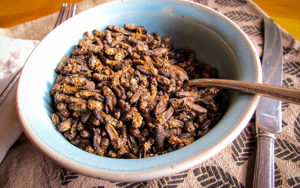
Roasted crickets are one of the most popular edible insects worldwide.
Cricket Brownies
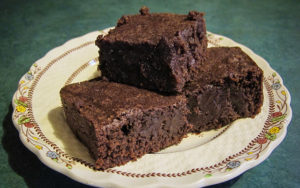
Cricket Flours brownies are dense, chocolaty, and full of protein.
Protein Bars
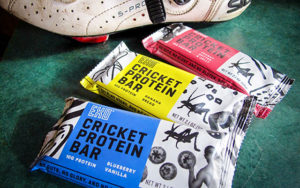
Exo cricket-flour protein bars are available in an array of flavors to power any athlete.
Dog Treats

My dog Rosie works on her “wait” command before gobbling up yet another Chippin cricket-flour dog treat.
Cricket Tacos
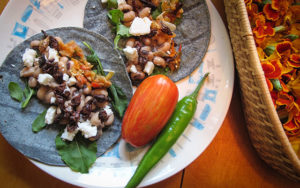
Oaxacan chapulines add protein, spice, and crunch to traditional tacos.
Cricket Cake
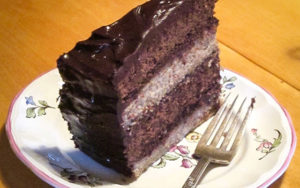
Cricket Flours birthday cake was topped with non-bug chocolate ganache.
Bug Candy

Various forms of buggy candy — such as Worm Snax, Earthwoormz, and lollipops that encase worms, crickets, and yes, scorpions in sugar — may be more gimmick than world-saving snack, but they’re good fun.
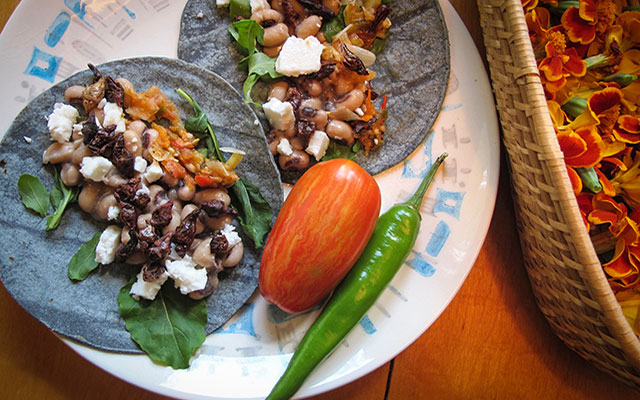
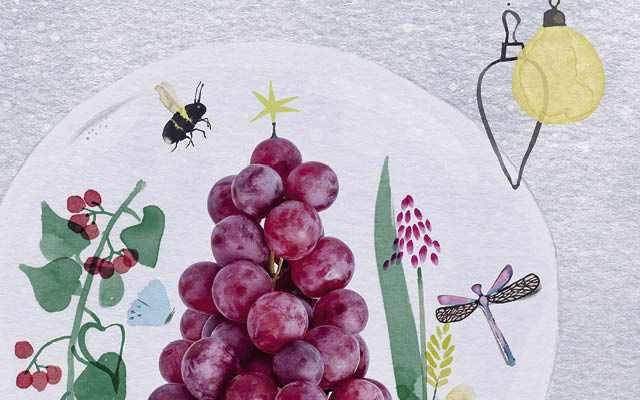


This Post Has 0 Comments